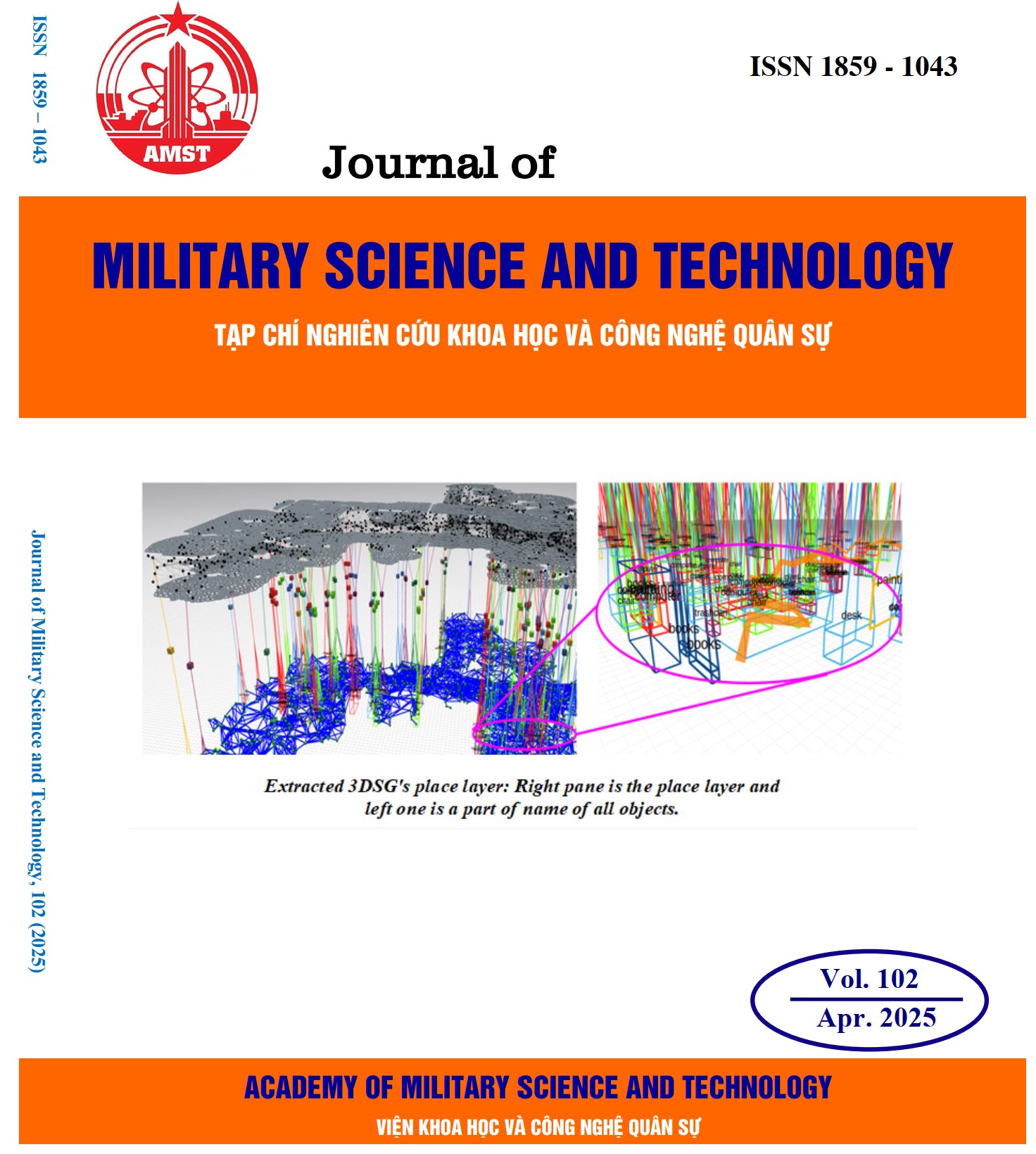Study on the development of 3D printing materials based on blend of polyamide 6 and polyamide 11
574 viewsDOI:
https://doi.org/10.54939/1859-1043.j.mst.102.2025.101-108Keywords:
3D printing; Composite material; Polyamide 6; Carbon fiber.Abstract
3D printed CF/PA6+PA11 filaments are created from a blend of BASF's polyamide 6 (PA6), Arkema's polyamide 11 (PA11), and carbon fibers from Toray (Japan). This study focuses on evaluating the blend ratios of PA6, PA11, and the composite ratios of the blend with carbon fibers in the production of 3D printed filaments. Key technical parameters such as tensile strength, flexural strength, and impact strength were measured to assess mechanical performance under filament fabrication conditions. The study determined that a blend ratio of 70:30 for PA6:PA11 provides the best compatibility. Based on the PA6 and PA11 blend, the 3D printed CF/PA6-PA11 filament achieved suitable mechanical properties with component ratios of PA6, PA11, short carbon fibers (≤ 0.3 mm), and long carbon fibers (0.3 mm – 1 mm) at 49%, 21%, 20%, and 10%, respectively.
References
[1]. https://markforged.com/resources/blog/replacing-aluminum-parts-with-3d-printed-carbon-fiber
[2]. Dhinakaran, V., et al., "A review on recent advancements in fused deposition modeling", Materials today: proceedings, 27, p. 752-756, (2020). DOI: https://doi.org/10.1016/j.matpr.2019.12.036
[3]. Singh, R. and H.K. Garg, "Fused deposition modeling–a state of art review and future applications", Reference Module in Materials Science and Materials Engineering, p. 1-20, (2016). DOI: https://doi.org/10.1016/B978-0-12-803581-8.04037-6
[4]. Winarso, R., et al., "Application of fused deposition modeling (FDM) on bone scaffold manufacturing process: A review", Heliyon, (2022). DOI: https://doi.org/10.1016/j.heliyon.2022.e11701
[5]. Melocchi, A., et al., "A graphical review on the escalation of fused deposition modeling (FDM) 3D printing in the pharmaceutical field", Journal of Pharmaceutical Sciences, 109, 10, p. 2943-2957, (2020). DOI: https://doi.org/10.1016/j.xphs.2020.07.011
[6]. Pu'ad, N.M., et al., "Review on the fabrication of fused deposition modelling (FDM) composite filament for biomedical applications", Materials Today: Proceedings, 29, p. 228-232, (2020). DOI: https://doi.org/10.1016/j.matpr.2020.05.535
[7]. Tuazon, Brian & Custodio, Nick Anthony & Basuel, Rex & Reyes, Lanz & Dizon, John Ryan. “3D Printing Technology and Materials for Automotive Application: A Mini-Review”. Key Engineering Materials. 913. 3. (2022). 10.4028/p-26o076. DOI: https://doi.org/10.4028/p-26o076
[8]. Yang, J.; Li, B.; Liu, J.; Tu, Z.; Wu, X. “Application of Additive Manufacturing in the Automobile Industry: A Mini Review”. Processes, 12, 1101, (2024). DOI: https://doi.org/10.3390/pr12061101
[9]. Karkun, Mohammad Suhel & Dharmalingam, Sathish. “3D Printing Technology in Aerospace Industry – A Review”. International Journal of Aviation, Aeronautics, and Aerospace (2022). 10.15394/ijaaa.2022.1708. DOI: https://doi.org/10.15394/ijaaa.2022.1708
[10]. Martinez, Dan William & Espino, Michaela & Honelly Mae, Cascolan & Crisostomo, Jan Lloyd & Dizon, John Ryan. “A Comprehensive Review on the Application of 3D Printing in the Aerospace Industry”. Key Engineering Materials. 913. 27-34. (2022). 10.4028/p-94a9zb. DOI: https://doi.org/10.4028/p-94a9zb
[11]. Adeleke, Adeniyi & Montero, Danny & Lottu, Oluwaseun & Ninduwezuor-Ehiobu, Nwakamma & Ani, Emmanuel. “3D printing in aerospace and defense: A review of technological breakthroughs and applications”. World Journal of Advanced Research and Reviews. 21. 1149-1160, (2024). DOI: https://doi.org/10.30574/wjarr.2024.21.2.0558
[12]. Marciniak, Marcin. “The 3D Printing in Military Applications: FDM Technology, Materials, and Implications”. Advances in Military Technology. 18. 241-257, (2023). DOI: https://doi.org/10.3849/aimt.01846
[13]. Đinh, Thế Dũng, Nguyễn, Trần Hùng, Lã Đức Dương, “Nghiên cứu tối ưu hóa quá trình kéo sợi và in 3D đối với vật liệu CF/PA6”. Tạp chí Khoa học và Công nghệ quân sự, No 94, P. 55–61, (2024), (in Vietnamese). DOI: https://doi.org/10.54939/1859-1043.j.mst.94.2024.55-61
[14]. Miyabo, Atsushi. “Polyamide 11: New Material and Application Development of Castor Oil Based Engineering Plastics for Fiber Industries”. Sen'i Gakkaishi. 67. P.351-P.356, (2011). DOI: https://doi.org/10.2115/fiber.67.P_351







